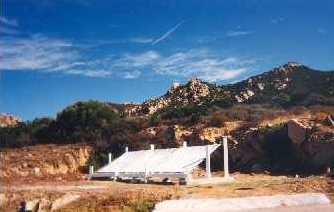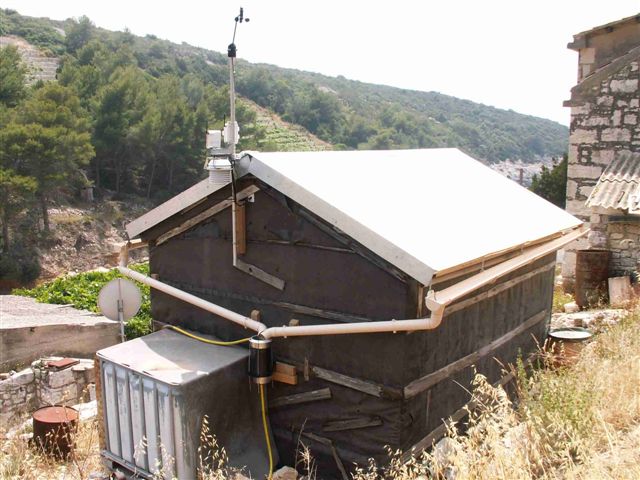Difference between revisions of "Water Portal / Rainwater Harvesting / Fog and dew collection / Dew collection and storage"
(→Reference manuals, videos & links) |
(→Acknowledgements) |
||
| Line 60: | Line 60: | ||
==Acknowledgements== | ==Acknowledgements== | ||
| − | |||
* CARE Nederland, ''Desk Study Resilient WASH systems in drought prone areas''. October 2010. | * CARE Nederland, ''Desk Study Resilient WASH systems in drought prone areas''. October 2010. | ||
* M. Mileta, D., Beysens and V. Nikolayev, et al. [http://www.google.com/url?sa=t&rct=j&q=&esrc=s&source=web&cd=11&ved=0CDkQFjAAOAo&url=http%3A%2F%2Fbalwois.com%2Fbalwois%2Fadministration%2Ffull_paper%2Fffp-587.pdf&ei=yiNuT4XHJeiOiALGz_iNBQ&usg=AFQjCNFcGJ2LQ0cEcCxzw5ZCCjS4SVZu0w&sig2=Dp12ayEQaGJPZpLDfHMpzw ''Fog and Dew Collection Projects in Croatia''] Croatia and France, 2004. | * M. Mileta, D., Beysens and V. Nikolayev, et al. [http://www.google.com/url?sa=t&rct=j&q=&esrc=s&source=web&cd=11&ved=0CDkQFjAAOAo&url=http%3A%2F%2Fbalwois.com%2Fbalwois%2Fadministration%2Ffull_paper%2Fffp-587.pdf&ei=yiNuT4XHJeiOiALGz_iNBQ&usg=AFQjCNFcGJ2LQ0cEcCxzw5ZCCjS4SVZu0w&sig2=Dp12ayEQaGJPZpLDfHMpzw ''Fog and Dew Collection Projects in Croatia''] Croatia and France, 2004. | ||
* [http://www.tacticalintelligence.net/blog/dew-collection.htm ''Dew Collection for Survival Water''] Tactical Intelligence. July 2011. | * [http://www.tacticalintelligence.net/blog/dew-collection.htm ''Dew Collection for Survival Water''] Tactical Intelligence. July 2011. | ||
Revision as of 04:18, 21 November 2012

Dew can bring substantial amount of water when the other resources (groundwater, rain, fog) are lacking. Rainwater harvesting structures can also be used to collect dew at night, which condenses on a surface from where water droplets drip into a gutter that goes to a reservoir. Quantity from dew varies according to location but at times has been shown to constitute a significant proportion of normal rainfall. Dew collection is a possible supplementary source of water in arid and semi- arid areas, but has so far not been widely applied and is an area of further research.
Suitable conditions
- Large areas of unused land.
- Areas with large diurnal temperature range (at least 12 degrees Celsius from day to night).
- Areas with low winds (winds cause evaporation). It is advised to have an upper limit of 4 m/s at 10m.
- The average wind speeds where dew forms correspond to rather large speed (1-2 m/s), higher than ones found in continental locations of 0.1 - 0.2 m/s.
- Dew yields are seen to rise when cloud cover diminishes because the radiative cooling increases.
- The largest dew yields correspond to the highest humidity and the lowest cooling temperature.
- The condensing material must be adequate (thermally isolated, water resistant, on a slope).
Do not collect dew in these circumstances:
- On or near poisonous plants
- On plants or objects that are chemically treated or sprayed
- In areas where obvious animal defecation has taken place
- Near roadsides
| Advantages | Disadvantages |
|---|---|
| - Water quality can be good - Unaffected by drought |
- Relatively small water quantities can be harvested - Variability in water collection, which also varies according to the season. Need to supplement water from other sources. |
Resilience to changes in the environment
Dew collection is not affected by drought or changing precipitation, only if there are changes in humidity. Less humidity means less dew.
Construction, operation and maintenance
The best time to gather dew is in the early morning before the sun has touched your collection area.
The catchment area needs to be large enough to collect the required amount of water, while also being practical to where it is collected. Typical collection rates vary according to the site – in Morocco rates of collection were 18.9 litres/m2/yr (in an area of 215mm annual rainfall) whereas in Spain rates increased to a range of 41.5 to 71.1 litres/ m2/yr (in an area of between 246 – 324mm annual rainfall).
Efficiency of collection: it seems that elevated surfaces collect 14% more water compared to one on the ground. It may also be helpful to use galvanized roof sheets that can be painted with special OPUR paint – this paint enhances infrared cooling and remain hydrophilic due to photocatalytic reaction with ultraviolet light. Such a system was created in Morocco where painted sheets were underlain with a 2cm thick polystyrene insulation, and the roof pitch was 30 degrees. The system uses radiative cooling at night. Foil can also be used but is prone to damage.
Dew collection can also be used to create a form of micro irrigation where plastic trays are used to funnel dew to plant roots.
Costs
Costs vary widely, but the materials needed in each locality will determine total costs to build a system.
A simple system consists of a large flat angled surface, pipes or gutters to transport the dripping, and a collection tank.
Field experiences
Manuals, videos, and links
International Organization for Dew Utilization (OPUR)
Acknowledgements
- CARE Nederland, Desk Study Resilient WASH systems in drought prone areas. October 2010.
- M. Mileta, D., Beysens and V. Nikolayev, et al. Fog and Dew Collection Projects in Croatia Croatia and France, 2004.
- Dew Collection for Survival Water Tactical Intelligence. July 2011.

